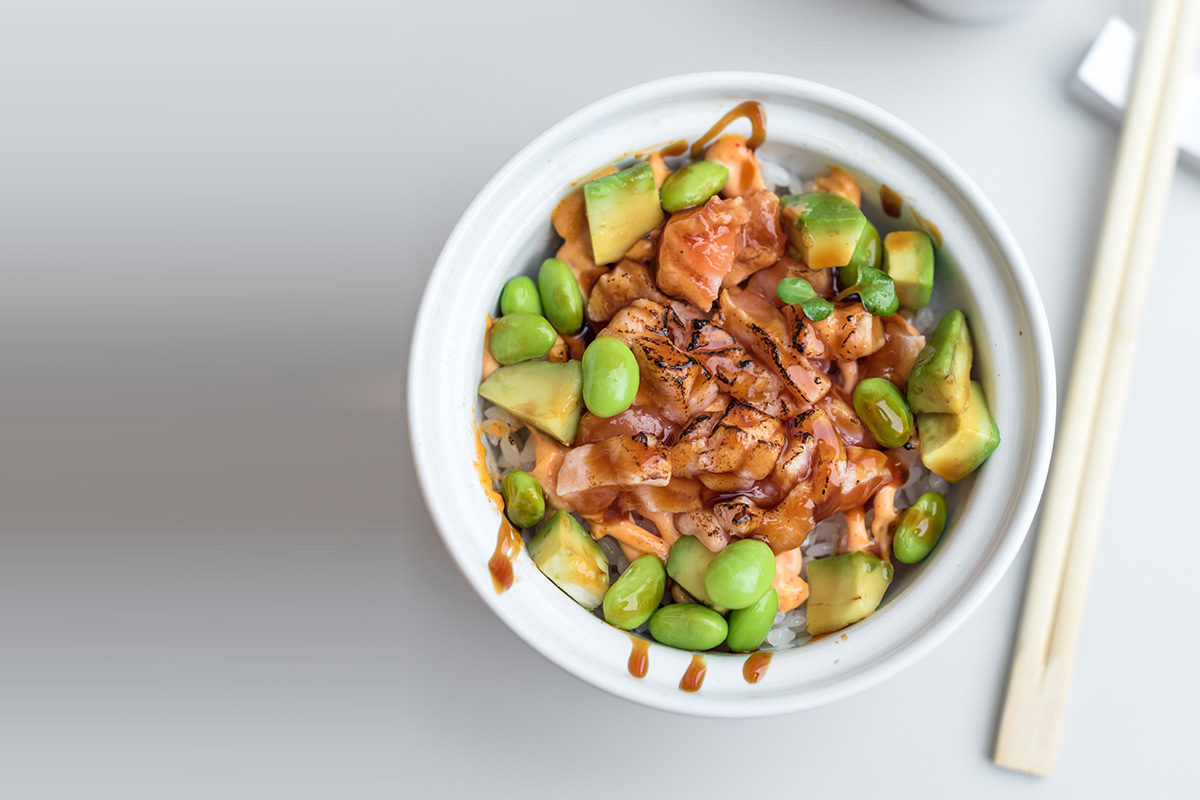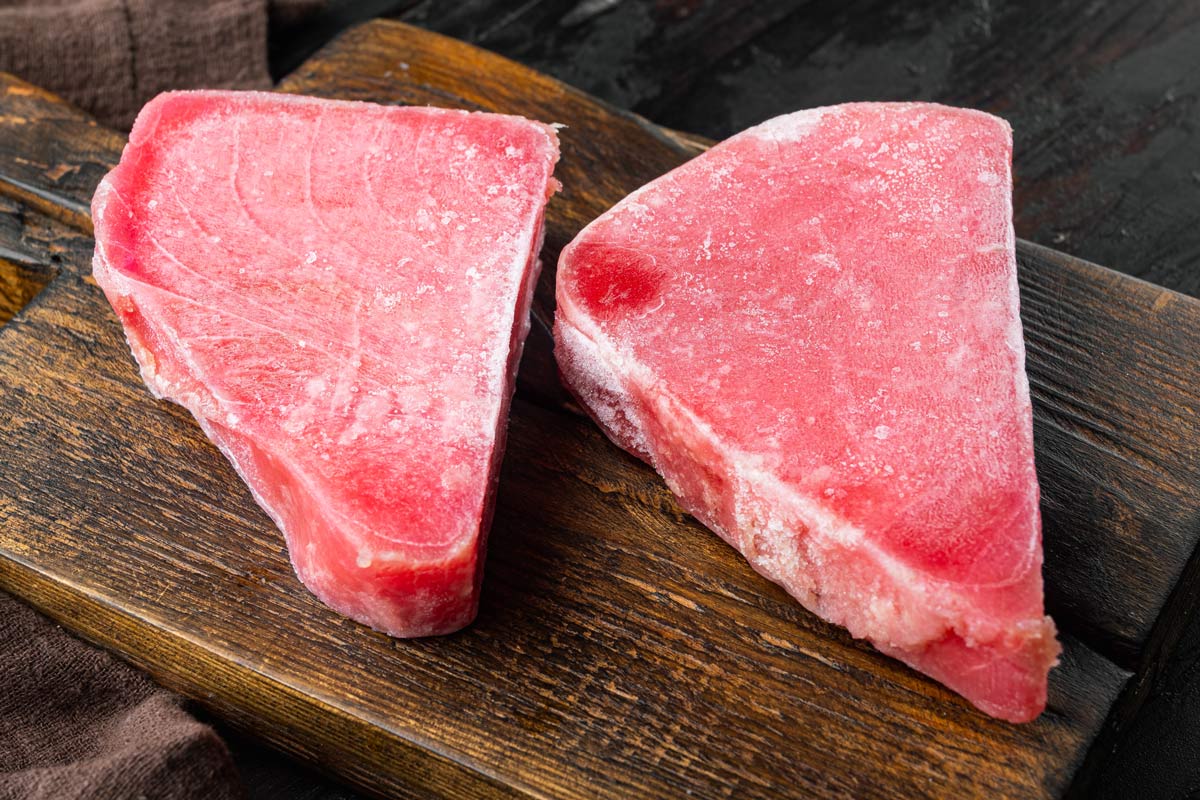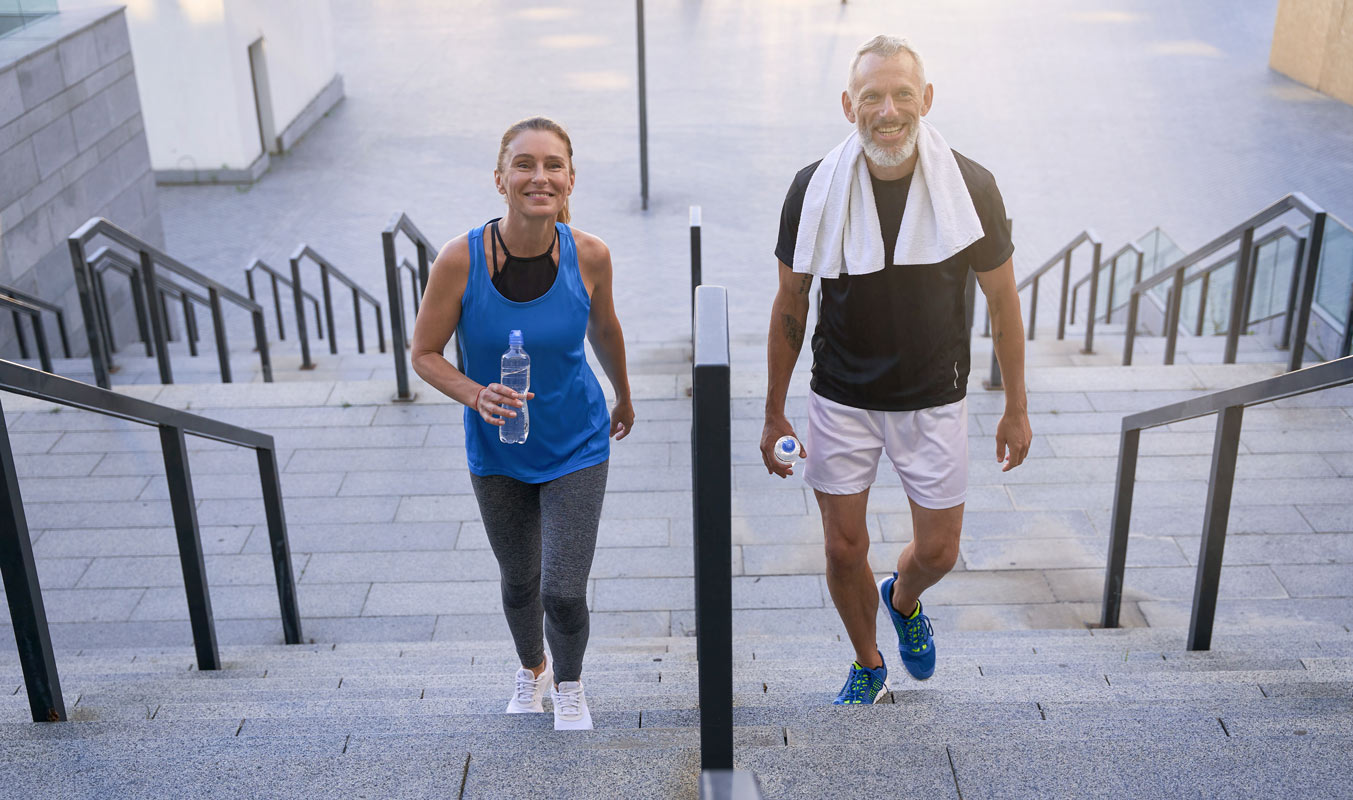Salmon Bowl Recipe (Made Simple), Spotlight on Sesame Seeds, Thawing Frozen Fish, Why Wild Seafood is Best, and Counting Your Biological Age
Americans still don’t eat enough fish, and the challenge of finding quality fresh seafood is one of the reasons. My DIY salmon bowl recipe is a great way to get the goodness of salmon plus as many veggies as you’d like to include. Read on to see why frozen is actually preferred—unless of course you live near a fishing dock! Then find out about advances in measuring biological aging, a metric that makes your chronological age less important.
Salmon Bowl Made Simple
 Salmon Bowl Made Simple
Salmon Bowl Made SimplePoke bowls are still very popular, but it’s not always easy to buy the sushi-grade tuna needed to make your own. This variation includes sautéed chunks of salmon instead of ahi. The technique is also great if you like tuna but prefer it cooked. I’ve suggested many veggies to fill up your bowl, but have fun choosing other ingredients—be guided by what’s most fresh at your market.
Ingredients
For the fish:
- 1 pound skinless salmon fillet, wild caught if possible
- 1 tablespoon regular or reduced-sodium soy sauce
- 1 tablespoon sesame oil
- 1 tablespoon rice vinegar
- 3 tablespoons extra virgin olive oil, divided use
For the spicy mayo:
- 1/4 cup best-quality mayonnaise
- 1 tablespoon extra virgin olive oil
- 1 teaspoon sriracha, or to taste
For the spicy bowls:
- 3 cups cooked quinoa or brown or white rice
- 1 large cucumber, diced
- 3 scallions, trimmed and sliced into small pieces on the diagonal
- 1 cup shelled edamame
- 2 large avocados, cubed or cut into thin slices
- 2 tablespoons black or white sesame seeds or a mix
- Optional: red onion rings, sliced tomatoes, shredded carrots, chopped red cabbage, enoki mushrooms, and other fresh veggies of your choice
Directions
Step 1
Using a sharp knife, cut the salmon into 1-inch chunks. Add to a glass bowl with the soy sauce, sesame oil, rice vinegar, and 1 tablespoon of olive oil. Toss well and set aside for 30 minutes.
Step 2
Make the spicy mayo: In a small bowl, whisk the mayonnaise and the olive oil until well blended, then mix in the sriracha; set aside.
Step 3
Heat a frying pan over medium-high heat. When hot, add the rest of the olive oil and the salmon chunks. Sear on all sides, using tongs to turn the pieces. When cooked through, remove the pan from the heat.
Step 4
Assemble the ingredients in four deep bowls: Center equal amounts of the cooked grains, then top with the vegetables and then the salmon chunks. Use a fork to drizzle on the spicy mayo, then sprinkle with the sesame seeds.
Makes 4 servings

Healthy Ingredient Spotlight
Black and White Sesame Seeds
Sesame seeds are more than a colorful and crunchy garnish—they can be pressed to make the Asian staple sesame oil, both the plain and toasted varieties, and whipped into the Middle Eastern treats tahini and halvah. Importantly, these little seeds pack a big punch when it comes to nutrients, so consider sprinkling them on more than poke bowls and sushi rolls.
Sesame seeds are rich in fat; protein; minerals like iron, calcium, copper, potassium, and manganese; vitamins like A and E and B vitamins; and fiber. Among their phytochemicals are lignans, which have antioxidant and anti-inflammatory properties. Because more of these nutrients, including their lignans, are in the hull, always choose unhulled sesame seeds. Black ones almost always come with the hull intact, but you’ll have to look carefully to find unhulled white ones.
Black and white sesame seeds have some taste differences, with the black ones being slightly crunchier and more bitter. I like to mix the two because this creates visual appeal and different taste sensations.

Quick Kitchen Nugget
Thawing Frozen Fish

Fish that’s caught in faraway waters and flash-frozen at sea often retains more of its nutrients and flavor—you’ll often see the words “previously frozen” on thawed fish at markets, a potential good sign. If you’re buying fish still frozen, make sure it’s frozen solid when you purchase it. Let it thaw overnight in the fridge, not on a countertop, to preserve that freshness—defrosting it in a cold fridge also helps inhibit the growth of any harmful bacteria. To do it properly, take it out of its packaging and put it on a plate or tray lined with a few sheets of paper towels or on a rack over the plate with paper towels. Just before cooking, rinse under cold water and pat dry.

For Your Best Health
Seafood: Why “Wild” Wins Hands Down
Research done at the University of Cambridge in the UK offers more insight into why farmed salmon isn’t as nutritious as wild salmon or other wild-caught fish, like mackerel, anchovies, and herring—even though these same varieties are often used in farmed salmon feeds. These oily fish contain essential nutrients including calcium, B12, and omega-3s, but they don’t transfer over in the same amounts when fed to farmed salmon.
By analyzing the flow of nutrients from the edible species of wild fish used as feed, which also included sprat and blue whiting, to the farmed salmon they were fed to, scientists found that farmed salmon production leads to an overall loss of essential dietary nutrients. Quantities of calcium were over five times higher in wild feed fish fillets than in farmed salmon fillets; iodine was four times higher; and iron, omega-3s, vitamin B12, and vitamin A were over 1.5 times higher. Wild feed species and farmed salmon did have comparable quantities of vitamin D. Zinc and selenium were actually higher in the farmed salmon than in the wild feed species due to other salmon feed ingredients—a real mark of progress in the salmon sector, said the researchers.
Another interesting point is that you can get key nutrients, including omega-3 fatty acids, which are known to reduce the risk of cardiovascular disease and stroke, in smaller portion sizes of wild fish than in farmed Atlantic salmon.
“What we’re seeing is that most species of wild fish used as feed have a similar or greater density and range of micronutrients than farmed salmon fillets,” said lead author David Willer, PhD, of the zoology department at Cambridge. “While still enjoying eating salmon and supporting sustainable growth in the sector, people should consider eating a greater and wider variety of wild fish species like sardines, mackerel, and anchovies, to get more essential nutrients straight to their plate.” He goes on to say that eating more wild feed species directly could benefit our health while also reducing aquaculture demand for finite marine resources.
“Marine fisheries are important local and global food systems, but large catches are being diverted toward farm feeds. Prioritizing nutritious seafood for people can help improve both diets and ocean sustainability,” said senior author James Robinson, PhD, of Lancaster University, also in the UK.

Fitness Flash
Forget the Calendar: What Counts Is Your Biological Age
University of Pittsburgh researchers have uncovered blood-based markers that allow them to predict a person’s biological age—how fast a person’s cells and organs age regardless of their birthdate. The new research, published in Aging Cell, points to pathways and compounds that may underlie biological age, shedding light on why people age differently and suggesting novel targets for interventions that could slow aging and increase health span, the length of time a person is healthy.
“Age is more than just a number,” said senior author Aditi Gurkar, PhD, assistant professor of geriatric medicine at Pitt’s School of Medicine and member of the Aging Institute, a joint venture of Pitt and UPMC. “Imagine two people aged 65: One rides a bike to work and goes skiing on the weekends, and the other can’t climb a flight of stairs. They have the same chronological age, but very different biological ages. Why do these two people age differently? This question drives my research.”
To answer it, Dr. Gurkar and her team compared 196 older adults whom they classified as either healthy or rapid agers by how easily they completed simple walking challenges. Because walking ability is a holistic measure of cardiovascular fitness, physical strength, and neurological health, other studies have shown that it’s the single best predictor of hospitalization, disability, functional decline, and death in older adults. Healthy agers were 75 years or older and could ascend a flight of stairs or walk for 15 minutes without resting, and the rapid agers, who were 65 to 75 years old, had to rest during these challenges.
According to Dr. Gurkar, this study is unique because the rapid agers were chronologically younger than the healthy agers, allowing the researchers to home in on markers of biological, not chronological, aging, unlike other studies that have compared young adults with older people.
To define a molecular fingerprint of biological aging in blood samples from participants, they performed metabolomics, the analysis of metabolites, or molecules that are produced by chemical pathways in the body, with blood samples from the two groups.
“Other studies have looked at genetics to measure biological aging, but genes are very static: the genes you’re born with are the genes you die with,” said Dr. Gurkar. “We chose to look at metabolites because they are dynamic: They change in real time to reflect our current health and how we feel, and we have the power to influence them through our lifestyles, diet, and environment.” Healthy and rapid agers showed clear differences in their metabolomes, indicating that metabolites in the blood could reflect biological age.

Dr. Gurkar and her team next identified 25 metabolites that they termed the Healthy Aging Metabolic (HAM) Index. They found that the HAM Index was better than other commonly used aging metrics, such as the frailty index, gait speed, and the Montreal Cognitive Assessment test, at distinguishing healthy and rapid agers. To validate their new index, the researchers analyzed a separate cohort of older adults from a Wisconsin-based study. The HAM Index correctly predicted whether individuals could walk outside for 10 minutes without stopping with accuracy of about 68%.
“We took a very different cohort of people from a different geographical region, and we saw the same metabolites were associated with biological aging,” said Dr. Gurkar. “This gives us confidence that the HAM Index can truly predict who is a healthy ager versus a rapid ager.”
Using an artificial intelligence model that can predict potential drivers of biological traits, the team identified three main metabolites that were most likely to promote healthy aging or drive rapid aging. In future research, they plan to delve into how these metabolites and molecular pathways that produce them contribute to biological aging and explore interventions that could slow this process. Dr. Gurkar is also planning more research to evaluate how the metabolome of younger people shifts over time. Eventually, she hopes to develop a blood test that could estimate biological age in young adults or predict those who might go on to develop diseases of aging.
“While it’s great that we can predict biological aging in older adults, what would be even more exciting is a blood test that, for example, can tell someone who’s 35 that they have a biological age more like a 45-year-old,” Dr. Gurkar said. “That person could then think about changing aspects of their lifestyle early—whether that’s improving their sleep, diet or exercise regimen—to hopefully reverse their biological age. Today, in medicine, we tend to wait for a problem to occur before we treat it. But aging doesn’t work that way—it’s about prevention. I think the future of medicine is going to be about knowing early on how someone is aging and developing personalized interventions to delay disease and extend health span.”
Get More Recipes In Your Inbox!